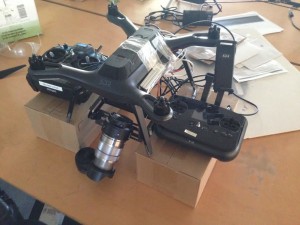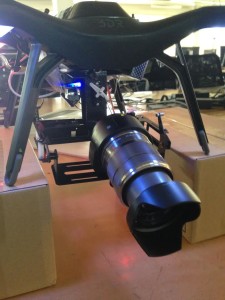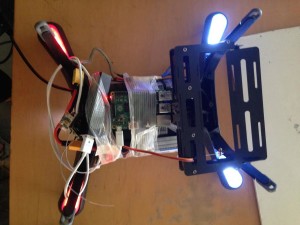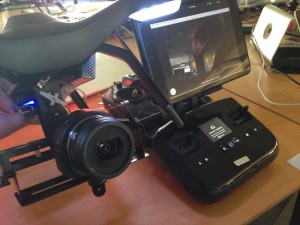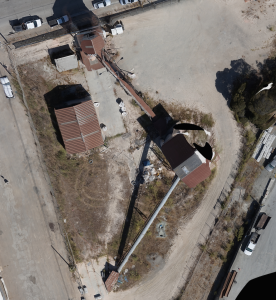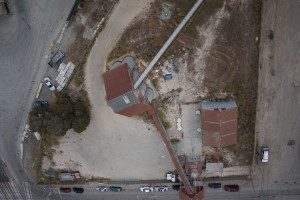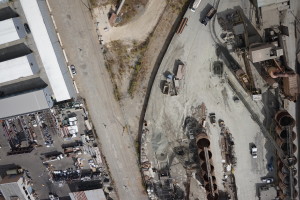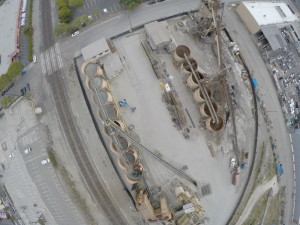If you answered yes to both of those questions, then this post is for you.
I’ve always had a special fondness for the Sony QX-1 and decided to rig up a contraption that would let me fly her with Solo. For both of you who are not familiar with the QX-1, it is a light (180 g body), high resolution (20MP), endowed with a large sensor (APS-C, 15x larger than GoPro) body that receives Sony E-mount lenses (including zoom lenses), and can be controlled by an extensive WiFi API.
First, I had to learn how to control the camera via the WiFi API. Jaime Machuca, of Droidika, wrote a nice MAVLink wrapper for the QX-1 API, but I never quite could get it going on Solo. Instead, I deployed the pysony API, which I installed on a RasPi that I taped to Solo’s belly. This RasPi connected to QX-1’s WiFi upon boot, ingested the mjpeg QX-1 livestream, pipe it over HDMI to Solo App, and triggered the QX-1 to begin shooting. I could control all other QX-1 functions on the ground, but I didn’t have an easy way to integrate those controls into Solo herself.
Next, I had to gimbal the camera. At 280g with the 20mm flat lens and a bit more with the 16-50mm Power Zoom, a brushless gimbal was probably out of the question and would have been much more difficult and expensive to build up. Because I was mostly interested in stills, I didn’t particularly care about smooth video, but rather wanted a horizontal horizon and the ability to tilt the camera. I selected the RC Timer CM102, which had no problem stabilizing the camera reasonably well and holding the desired pitch.
Click here to download a movie of this thing in action (on my desk).
These two pieces combined succeeded into turning Solo into a reasonable, but kludgy solution to capture truly professional aerial images for either general consumption or the generation of high quality maps or models. However, while this project is functional, it is incomplete. This feat of engineering contains no fewer than two PixHawks, six batteries, 20+ feet of cable, two companion computers, five ESCs, 10+ feet of strapping tape, and two transmitters.
Some example images comparing QX-1 to GoPro are below. Click the image to see the full resolution.
3D model I quickly captured with 10 QX-1 images. A few defects are present because I made no efforts to collect the oblique views.
An image from the data set that went into generating that model.
QX-1 and GoPro image take from similar altitudes for comparison of quality.
